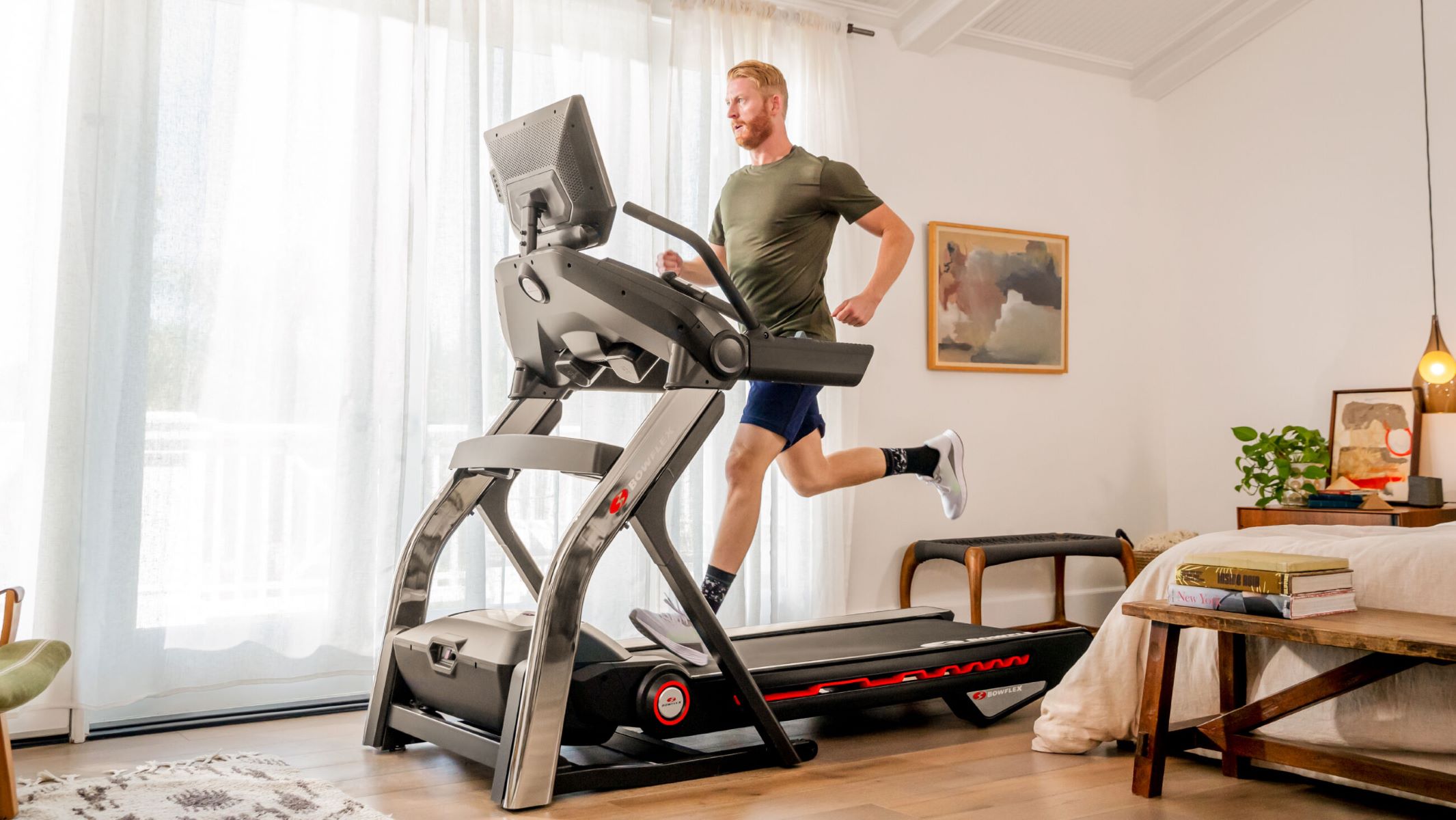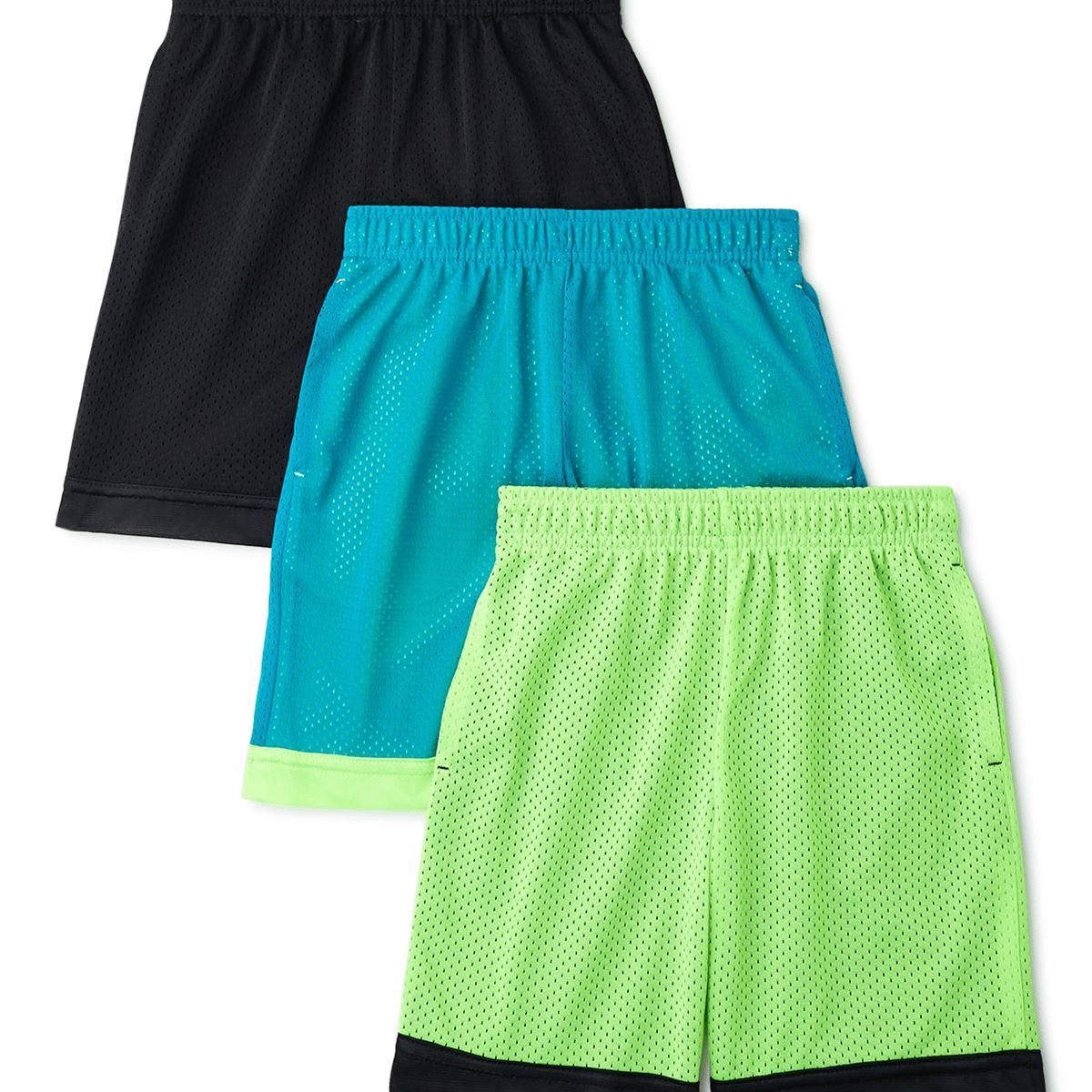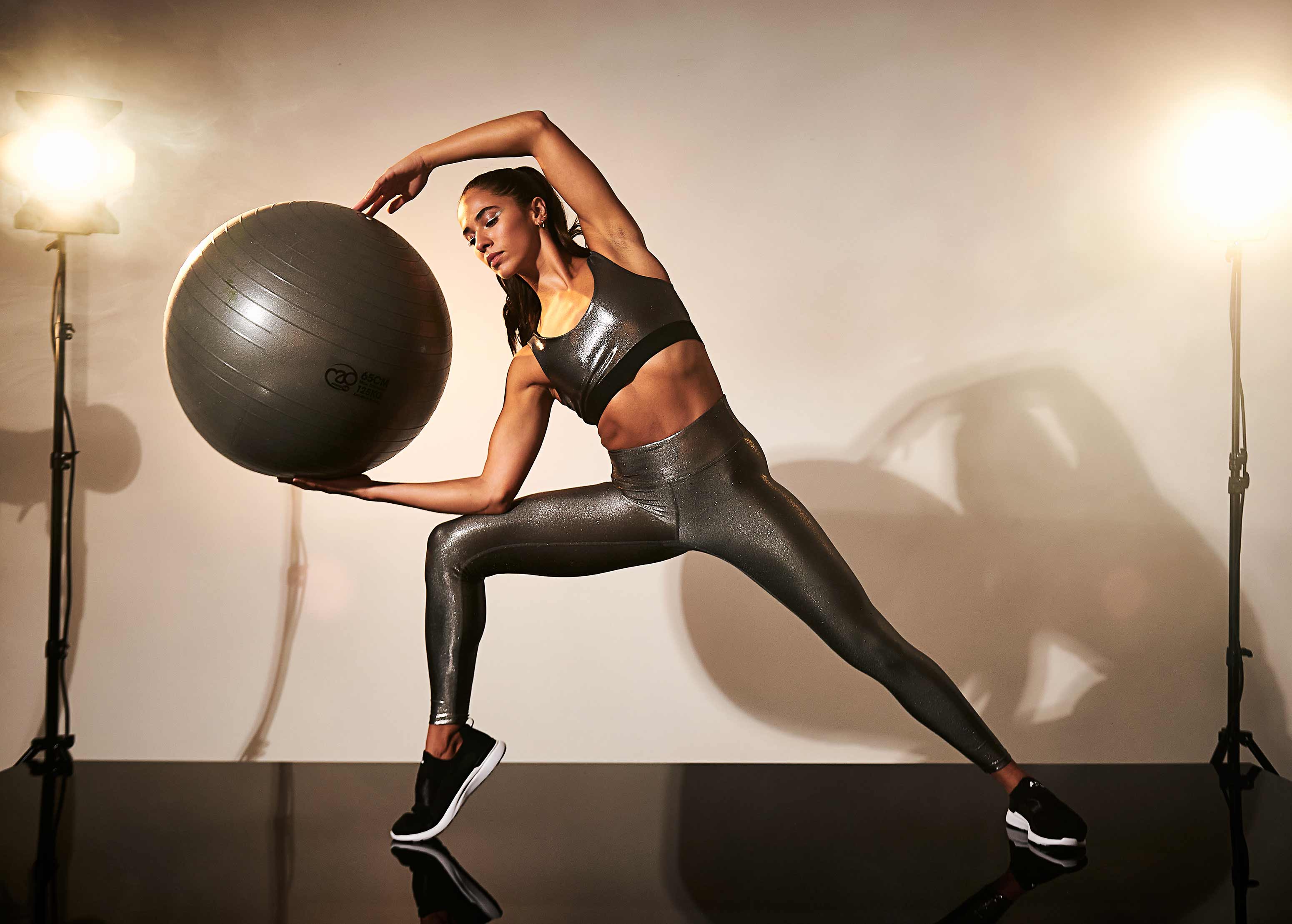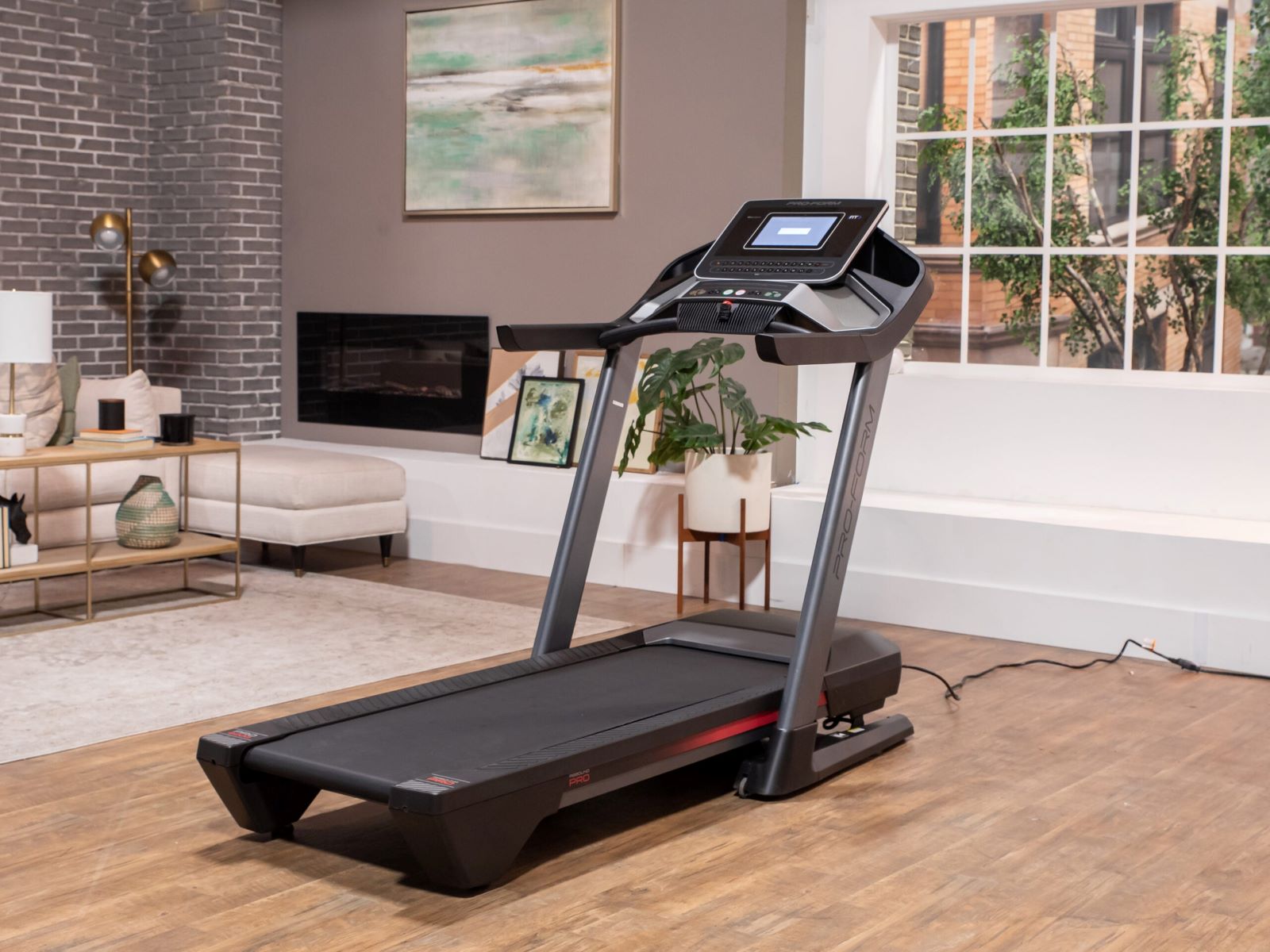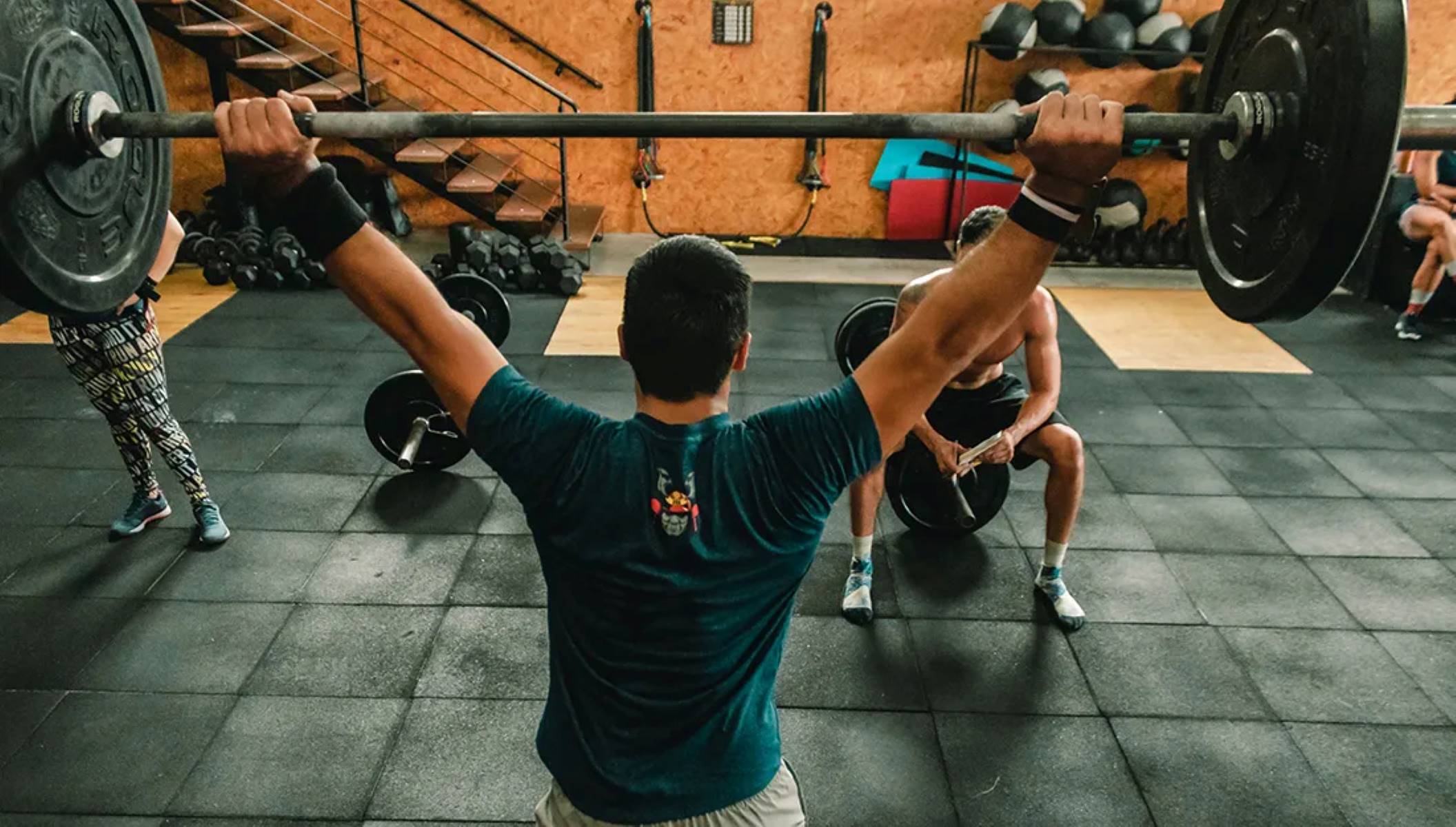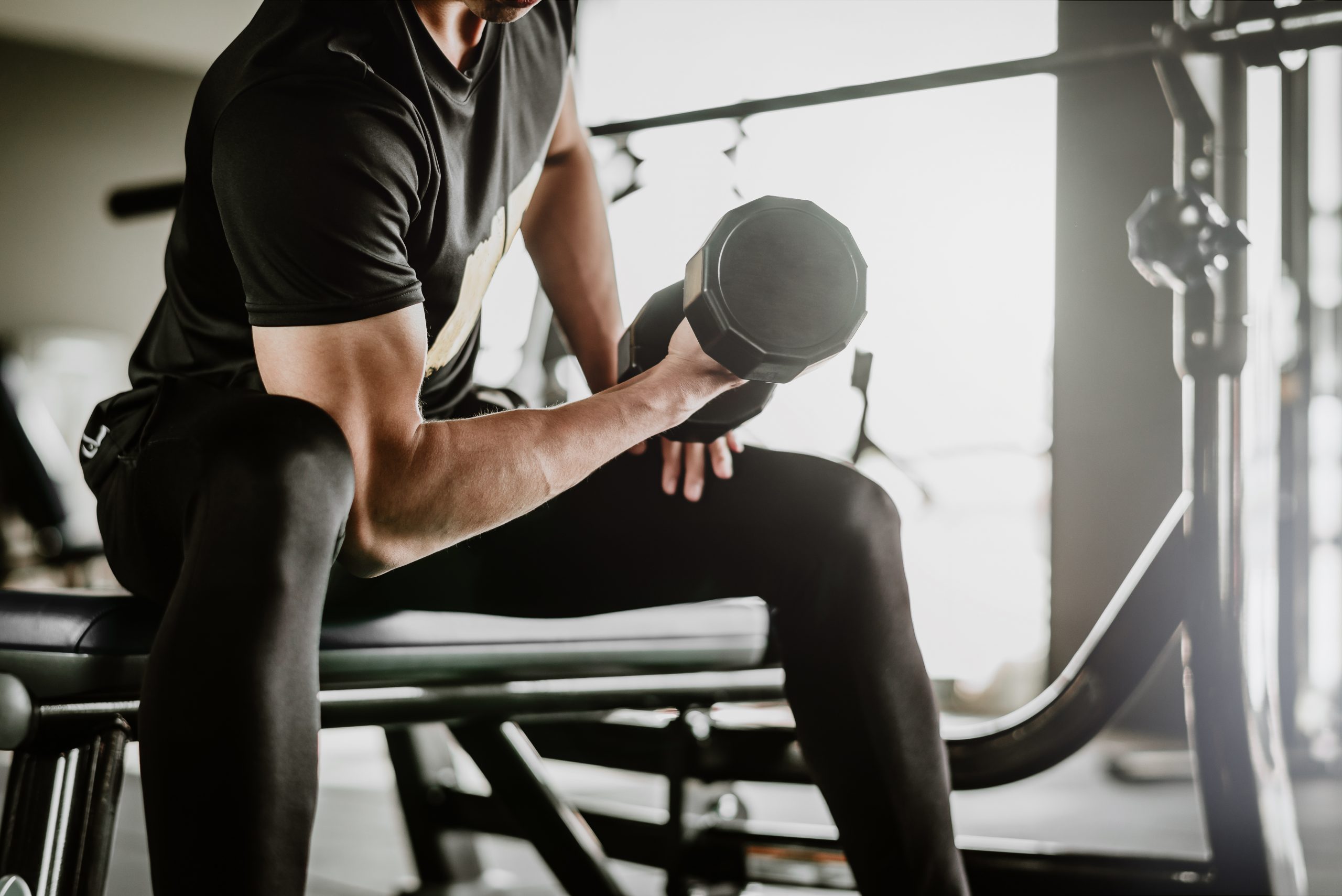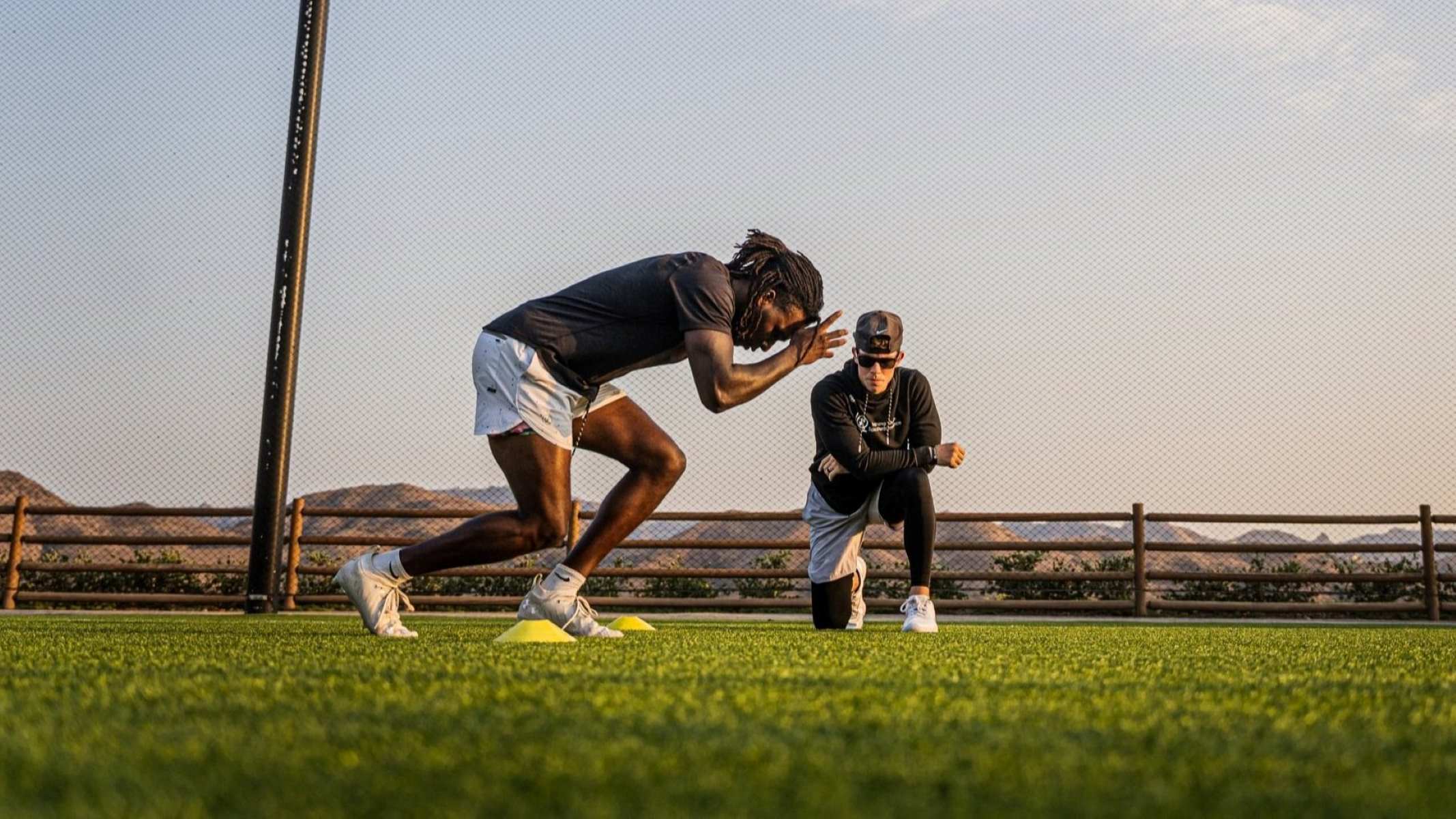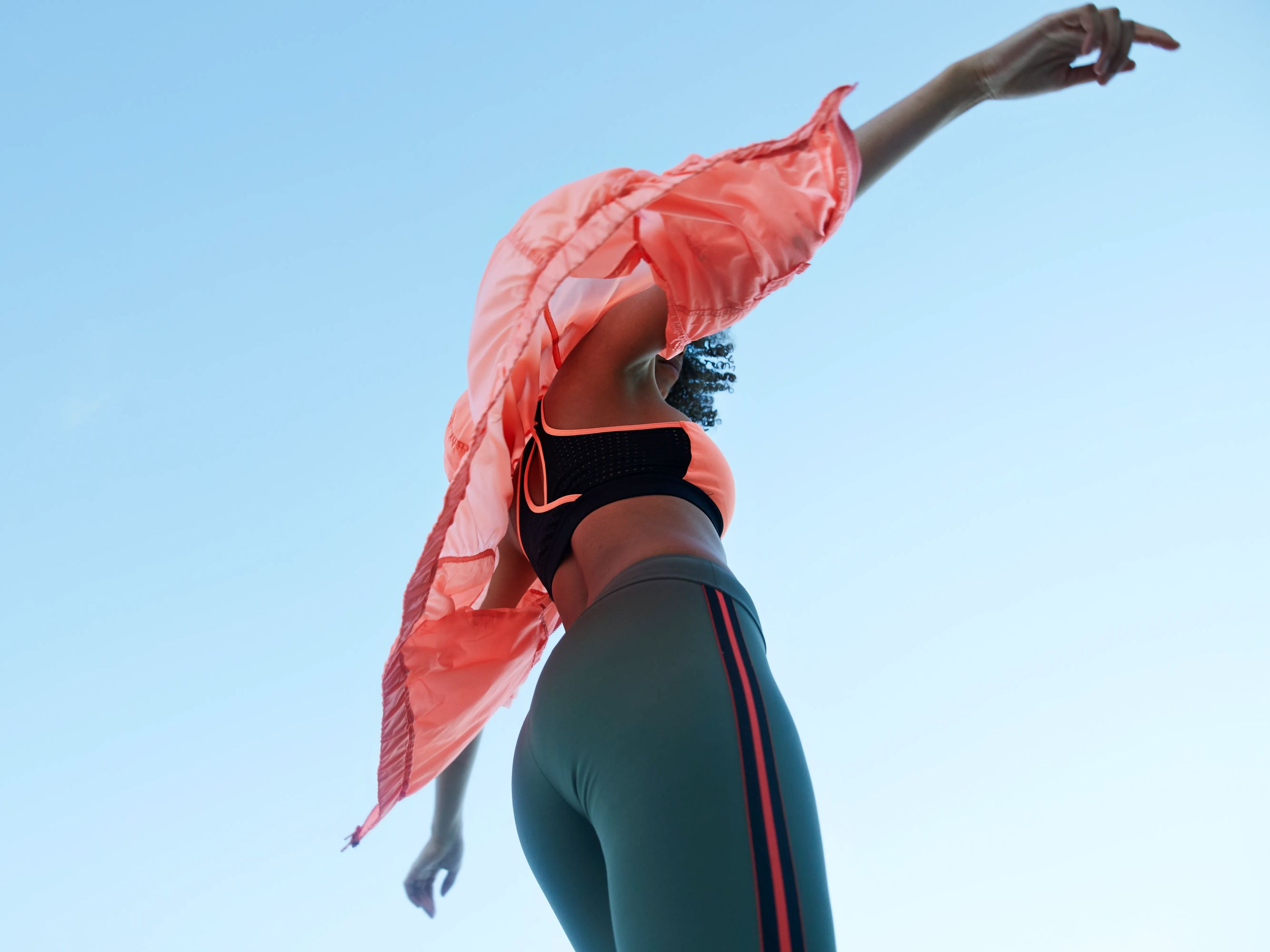Home>Misc>Featured>How Does Clothing Affect Athletic Performance
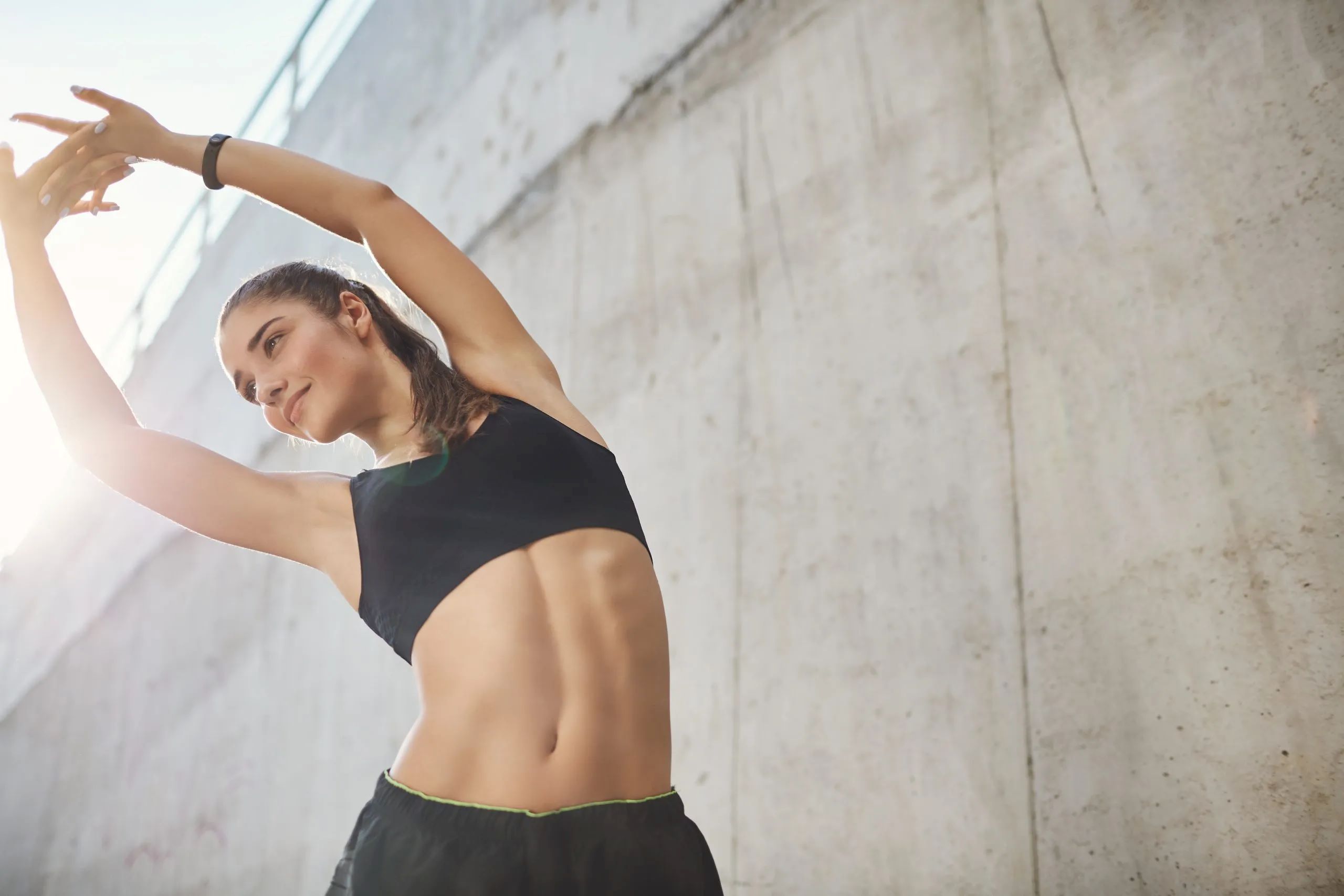

Featured
How Does Clothing Affect Athletic Performance
Modified: August 22, 2023
Discover the impact of clothing on athletic performance with our featured article. Learn how specialized gear can enhance your abilities and optimize your workout experience.
Introduction
When it comes to athletic performance, many factors come into play, including skill, training, and physical conditioning. However, one aspect that is often overlooked but can significantly impact performance is clothing. Yes, you read that right – the clothes you wear can make a difference in how well you perform on the field, track, or court.
Athletic clothing serves a dual purpose: it provides comfort and protection while also optimizing performance. The right choice of clothing can boost your confidence, enhance your range of motion, regulate body temperature, and help prevent injuries. On the other hand, ill-fitting or inappropriate clothing can hinder your movement, cause discomfort, and ultimately affect your overall performance.
In this article, we will explore the various ways in which clothing can affect athletic performance and the factors to consider when choosing the right attire for your sporting activities. We will also delve into the importance of fabric technology, proper fit and comfort, the psychological effects of clothing, and how weather conditions impact your clothing choice. Additionally, we will discuss how clothing plays a role in injury prevention and keeping athletes performing at their best.
Whether you’re a professional athlete, a dedicated amateur, or simply someone who enjoys being active, understanding how clothing affects your performance can give you a competitive edge and make your exercise experience more enjoyable. So, let’s dive in and discover the fascinating ways in which clothing can impact your athletic performance.
The Impact of Clothing on Athletic Performance
The clothing you choose to wear during your athletic activities can have a significant impact on your performance. It’s not just about looking the part; it’s about functionality and optimizing your body’s capabilities. Let’s explore some ways in which clothing can affect your athletic performance.
Firstly, clothing has a direct impact on your range of motion. The right attire allows for unrestricted movement, enabling you to perform your athletic movements with ease and efficiency. Tight or constricting clothing can impair your flexibility and hinder your performance. For example, athletes involved in sports like gymnastics or martial arts require clothes that provide ample stretch and flexibility to execute their moves with precision.
Secondly, clothing plays a crucial role in regulating body temperature. When you engage in physical activities, your body heats up, and sweat is produced as a way to cool down. Breathable and moisture-wicking fabrics, such as polyester blends and specialized performance fabrics, allow sweat to evaporate quickly, keeping you dry and comfortable during exercise. On the other hand, wearing heavy or non-breathable materials can lead to overheating and discomfort, hampering your performance and potentially affecting your health.
Additionally, the choice of clothing can impact how you perceive yourself and how others perceive you, which can have psychological effects on your performance. Wearing appropriate athletic attire can boost your confidence, enhance your focus, and create a positive mindset. It can make you feel like a professional athlete, aiding in motivation and performance. On the contrary, wearing uncomfortable or mismatched clothing can lead to distractions, self-consciousness, and a lack of focus, potentially hindering your athletic performance.
Furthermore, clothing can also provide protection against potential injuries. Sports like football, rugby, and hockey involve physical contact and impact, so wearing protective gear, such as helmets, pads, and shin guards, is crucial for injury prevention. Likewise, selecting clothing with built-in compression and support can reduce muscle fatigue and decrease the risk of strains or sprains.
In summary, clothing has a significant impact on athletic performance. It affects your range of motion, body temperature regulation, psychological state, and injury prevention. Choosing the right attire that combines functionality, comfort, and style will optimize your performance and enhance your overall athletic experience.
Factors to Consider when Choosing Athletic Clothing
Choosing the right athletic clothing goes beyond just picking something off the rack. It requires careful consideration of various factors to ensure optimal performance and comfort. Here are some key factors to consider when selecting your athletic attire.
1. Activity: Consider the specific sport or activity you will be engaging in. Different sports have different clothing requirements. For example, running may require lightweight and breathable clothing, while contact sports may require protective gear.
2. Material: Look for fabrics that are breathable, moisture-wicking, and quick-drying. Popular choices include polyester blends, nylon, and spandex. These materials help regulate body temperature and keep you dry during intense physical activities.
3. Fit: The right fit is crucial for both comfort and performance. Choose clothing that allows for a full range of motion without being too tight or too loose. It should hug your body without restricting movement or causing chafing.
4. Comfort: Comfort is paramount when it comes to athletic clothing. Pay attention to details such as flat seams to prevent chafing, tagless labels for added comfort, and adjustable features for a personalized fit.
5. Weather conditions: Consider the climate and weather conditions in which you will be exercising. Dress appropriately, taking into account factors like temperature, humidity, and wind. Layering options can be beneficial in fluctuating weather conditions.
6. Durability: Athletic clothing undergoes a lot of wear and tear, so choose quality materials that can withstand repeated use and frequent washing. Reinforced stitching and durable fabrics will ensure longevity.
7. Style: While performance should be the priority, it doesn’t hurt to choose clothing that makes you feel good and confident. Find a balance between functionality and aesthetics to enhance your overall experience.
8. Safety: Certain sports require specific safety equipment, such as helmets, knee pads, or shin guards. Ensure that you comply with any necessary safety regulations and wear the appropriate gear for your chosen activity.
Remember, the right athletic clothing can make a significant difference in your performance and enjoyment of your favorite sports or activities. By considering these factors, you can choose clothing that not only enhances your performance but also keeps you comfortable and protected throughout your athletic journey.
Types of Clothing Ideal for Different Sports
Different sports have specific clothing requirements to ensure optimal performance and safety. Let’s explore some of the ideal clothing choices for various sports and activities.
- Running: For running, opt for lightweight and breathable clothing. Consider moisture-wicking shirts, shorts or leggings, and socks with cushioning. Don’t forget a supportive sports bra and comfortable running shoes with proper arch support.
- Tennis: Tennis players should choose clothing that allows for easy movement and breathability. Look for moisture-wicking tennis shirts and skirts or shorts with good stretch. Don’t neglect a supportive sports bra and tennis shoes with proper traction.
- Football: Football players require protective gear, including helmets, shoulder pads, and thigh pads. Additionally, wear jerseys and pants made of durable and breathable materials for comfort and mobility. Don’t forget to invest in proper football cleats for traction on the field.
- Cycling: Cyclists should prioritize aerodynamic clothing to reduce wind resistance. Look for cycling jerseys and shorts with padding for added comfort. Compression socks and proper cycling shoes are also essential for optimal performance.
- Yoga/Pilates: Clothing for yoga or Pilates should be flexible and allow for ease of movement. Choose form-fitting yet stretchy tops, leggings, or shorts. Look for materials that wick moisture and provide breathability.
- Basketball: Players involved in basketball should opt for loose-fitting jerseys and shorts made of breathable materials. Consider compression shorts for added support. Don’t forget to wear supportive basketball shoes with good traction.
- Gymnastics: Gymnasts require clothing that allows for maximum flexibility. Look for leotards or unitards made of stretchy and durable materials. Additionally, invest in high-quality grips or grips bags for bar routines.
- Hiking/Outdoor Activities: For hiking or outdoor activities, choose clothing that can adapt to changing weather conditions. Layering is key, so opt for moisture-wicking base layers, insulating mid-layers, and waterproof outer layers. Don’t forget to wear comfortable hiking boots or shoes for proper foot support.
Remember, the ideal clothing for each sport not only enhances performance but also contributes to comfort and safety. Consider the specific requirements of your chosen activity to ensure you have the right attire for optimal performance and enjoyment.
The Role of Fabric Technology in Athletic Performance
Fabric technology has revolutionized the world of athletic clothing, allowing athletes to enhance their performance and comfort levels. Let’s explore the significant role that fabric technology plays in improving athletic performance.
1. Moisture-wicking: Advanced fabric technologies incorporate moisture-wicking properties, which help to draw sweat away from the body. This allows for quicker evaporation, keeping athletes dry and comfortable during intense physical activities. Moisture-wicking fabrics, such as polyester blends and specialized performance fibers, help regulate body temperature and prevent excessive sweating.
2. Breathability: Breathable fabrics are designed to allow air to flow through the garment, promoting ventilation and reducing heat buildup. This helps regulate body temperature, preventing overheating and discomfort. Fabrics with mesh panels or perforations enhance breathability in targeted areas.
3. Stretch and Flexibility: Stretchable fabrics, such as spandex or elastane blends, provide athletes with freedom of movement. These fabrics offer excellent elasticity, allowing for a full range of motion without restricting performance. This is particularly important for sports that require dynamic movements like running, yoga, or gymnastics.
4. Compression: Compression garments apply gentle, graduated pressure to specific muscle groups. This helps improve blood circulation and oxygen delivery to the muscles, reducing muscle fatigue and enhancing performance. Compression clothing also aids in minimizing muscle vibration, which can reduce the risk of muscle soreness and injury.
5. UV Protection: Some fabrics are designed with built-in ultraviolet (UV) protection to shield athletes from harmful sun rays. This is especially important for outdoor activities and sports that involve prolonged exposure to the sun. UV-protective fabrics help prevent sunburn and reduce the risk of skin damage.
6. Odor Control: Many fabric technologies incorporate antimicrobial properties to combat odor-causing bacteria. This helps keep athletic clothing fresh and prevents the buildup of unpleasant odors, even after intense workouts. It allows athletes to feel confident and comfortable throughout their activities.
7. Durability and Easy Care: Fabric technologies also extend to improving the longevity and ease of care for athletic apparel. Enhanced durability ensures that clothing withstands rigorous activities, repeated washes, and general wear and tear. Additionally, technologies like stain resistance and quick-drying properties make cleaning and maintaining athletic clothing convenient.
Overall, the advancements in fabric technology have led to athletic clothing that offers superior performance, comfort, and functionality. Athletes can now benefit from moisture-wicking, breathability, stretch, compression, UV protection, odor control, durability, and easy care properties. By choosing garments featuring these fabric technologies, athletes can optimize their performance and enjoy a more comfortable and enjoyable athletic experience.
Importance of Proper Fit and Comfort in Clothing
When it comes to athletic clothing, the importance of proper fit and comfort cannot be overstated. The right fit and comfort level can greatly impact an athlete’s performance, confidence, and overall experience. Let’s explore why proper fit and comfort are essential in athletic clothing.
1. Range of Motion: Athletic clothing should allow for a full range of motion, enabling athletes to move freely and perform their movements without restrictions. Ill-fitting clothing can impede movement and hinder performance. Properly fitting clothing ensures that athletes can execute their motions with ease and efficiency, whether it’s running, jumping, or swinging a racket.
2. Reduced Distractions: Comfortable clothing minimizes distractions during physical activity. Ill-fitting or uncomfortable clothing can cause irritation, chafing, and discomfort, leading to a loss of focus and hindering performance. When the clothing fits well and is comfortable, athletes can remain focused on their performance without any unnecessary distractions.
3. Confidence: Wearing properly fitting athletic clothing can boost an athlete’s confidence. When athletes feel comfortable and confident in their attire, they can perform at their best. Properly fitting clothing enhances body awareness, allowing athletes to feel more in tune with their movements. This increased confidence can have a positive impact on performance and mindset.
4. Prevention of Injuries: Clothing that fits well can help prevent injuries. Loose clothing can get caught on equipment or limbs, leading to accidents or falls. On the other hand, overly tight clothing can restrict blood flow and impede proper muscle function. Properly fitting clothing provides the necessary support and allows for the natural movement of the body, reducing the risk of strains, sprains, and other injuries.
5. Climate Control: Properly fitting athletic clothing plays a role in regulating body temperature. Clothing that hugs the body without being too tight or constricting allows for better air circulation, promoting heat dissipation and preventing overheating. Additionally, moisture-wicking fabrics help keep the body cool and dry during intense physical activities.
6. Personalized Comfort: Every athlete has unique preferences and comfort requirements. Properly fitting clothing allows athletes to customize their comfort levels. Adjustable features like waistbands, straps, or closures provide a personalized fit, making it easier to find the ideal balance between support and comfort.
7. Durability: Proper fit is crucial for maintaining the durability of athletic clothing. Fabric rubbing against the skin or excessive stretching and pulling due to incorrect sizing can cause premature wear and tear. By choosing clothing that fits well, athletes can ensure the longevity of their apparel and get the most out of their investment.
In summary, proper fit and comfort are vital aspects of athletic clothing. A well-fitting outfit allows for a full range of motion, minimizes distractions, boosts confidence, prevents injuries, regulates body temperature, and provides personalized comfort. Athletes should prioritize finding the right fit to optimize their performance and enjoy their sporting activities to the fullest.
The Psychological Effects of Clothing on Athletes
It may come as a surprise, but the clothing athletes wear can have profound psychological effects on their performance and mindset. The right choice of clothing can boost confidence, enhance focus, and create a positive mindset. Let’s explore the psychological effects that clothing has on athletes.
1. Confidence: The clothing athletes wear can significantly impact their confidence levels. When athletes feel good about how they look in their attire, it can boost their confidence and self-esteem. Confidence is vital for peak athletic performance, as it allows athletes to trust in their abilities and make bolder moves on the field or court.
2. Professionalism: Dressing the part can make athletes feel like professionals, regardless of their level of play. Wearing proper athletic attire creates a sense of identity and allows athletes to step into their roles more convincingly. This psychological shift can help them adopt a professional mindset and approach their sport with greater dedication and focus.
3. Mindset and Focus: The clothing athletes wear can have an impact on their mindset and focus during competition. Specialized athletic clothing, such as jerseys or uniforms representing a team or country, can evoke a sense of pride and identity. This, in turn, helps athletes channel their focus and concentration towards their performance, blocking out distractions and enhancing their mental game.
4. Motivation: The right clothing can serve as a source of motivation for athletes. Donning athletic apparel with team logos or inspirational quotes can remind athletes of their goals and aspirations. This visual reminder can motivate them to push harder, persevere through challenges, and strive for excellence.
5. Comfort and Mental State: Comfortable clothing contributes to an athlete’s mental state and overall well-being. When athletes feel at ease in their attire, it reduces distractions and allows them to fully focus on their performance. Comfortable clothing can positively impact mental resilience, reducing stress and anxiety levels before and during competition.
6. Uniformity and Team Spirit: Wearing matching uniforms or team attire promotes a sense of unity and team spirit among athletes. It fosters a collective identity and helps athletes feel connected to their teammates. This psychological bonding can enhance communication, cooperation, and overall team performance.
7. Expression of Personality: Clothing can act as an expression of an athlete’s personality and individuality. Personalized accessories, colors, or designs on clothing can make athletes stand out and create a unique identity. This self-expression can give athletes a sense of ownership over their performance and allow them to play with more passion and joy.
In summary, the clothing athletes wear has psychological effects that can impact their performance, confidence, mindset, and motivation. The right choice of attire can boost confidence, enhance focus, create a sense of professionalism, and foster team spirit. By selecting clothing that aligns with their goals and provides comfort, athletes can prime themselves for success and perform at their best.
The Influence of Weather Conditions on Clothing Choice
Weather conditions play a crucial role in determining the appropriate clothing for athletes. The choice of clothing can significantly impact an athlete’s performance, comfort, and safety. Let’s explore how different weather conditions influence the selection of athletic attire.
1. Hot and Humid: In hot and humid conditions, athletes should prioritize clothing that promotes breathability and moisture-wicking. Lightweight and loose-fitting clothing made from moisture-wicking fabrics, such as polyester blends or performance fibers, allow sweat to evaporate quickly, helping to cool the body. Additional features like mesh panels or perforations enhance ventilation, keeping athletes comfortable and preventing overheating.
2. Cold and Windy: Cold and windy conditions call for attire that provides insulation and protection against the elements. Layering is essential to trap heat and regulate body temperature. Athletes can wear a combination of moisture-wicking base layers, insulating mid-layers, and windproof or waterproof outer layers. Fabrics like fleece or thermal materials provide warmth, while wind-resistant materials shield against chilly gusts. Hats, gloves, and thermal socks are also vital for preserving body heat.
3. Wet and Rainy: When facing wet and rainy conditions, athletes need clothing that can keep them dry and comfortable. Waterproof or water-resistant materials with sealed seams and adjustable hoods help repel rain and prevent water from seeping in. Quick-drying properties are also desirable to avoid prolonged moisture exposure. Additionally, athletes should consider wearing insulating layers beneath waterproof outerwear to retain body heat even when wet.
4. Cool and Dry: In cool and dry weather, athletes should aim for a balance of warmth and breathability. Layering is still important, but with a focus on moisture-wicking fabrics to regulate body temperature and manage sweat. Base layers should provide insulation, while outer layers allow for ventilation. Athletes can opt for lightweight jackets or long-sleeved shirts that can be easily removed as the body warms up during exercise.
5. Variable Weather: Weather conditions can be unpredictable, shifting from hot to cold, or dry to wet. Athletes should be prepared for variable weather with versatile clothing options. Layering, as mentioned before, is the key. It allows athletes to add or remove layers according to changing weather conditions. Having a lightweight, packable jacket or a waterproof shell on hand can provide flexibility and ensure comfort in shifting weather patterns.
It’s crucial for athletes to stay aware of weather forecasts and select appropriate clothing to adapt to the conditions they will be facing. By choosing clothing that suits the weather and climate, athletes can optimize their performance and stay comfortable throughout their activities, while also reducing the risk of overheating, hypothermia, or other weather-related health issues.
The Effect of Clothing on Injury Prevention
Clothing has a significant role to play in preventing injuries during athletic activities. Properly chosen attire can provide support, protection, and stability, reducing the risk of various injuries. Let’s explore how clothing affects injury prevention in sports and physical activities.
1. Impact Protection: Clothing designed with impact protection in mind can help safeguard athletes from falls, collisions, or contact during sports like football, rugby, or hockey. These sports often require protective gear such as helmets, shoulder pads, shin guards, or padded clothing to minimize the risk of head, shoulder, or shin injuries.
2. Compression Support: Compression garments provide a form of support to specific muscle groups. They assist in improving blood circulation, reducing muscle vibrations, and enhancing proprioception (awareness of body position). Compression clothing can help prevent muscle strains or tears by reducing muscle fatigue, enhancing performance, and providing joint stability.
3. Proper Joint Alignment: Clothing that offers support and compression can help maintain proper joint alignment. This is particularly important in activities that involve repetitive motion or stress on the joints, such as running or weightlifting. By stabilizing joints, clothing can help prevent conditions like runner’s knee or shoulder impingement.
4. Prevention of Skin Irritation: The right clothing can reduce the risk of skin irritation and chafing, which can lead to discomfort or painful skin conditions. Fabrics that minimize friction against the skin, such as those with flat seams or seamless construction, can help prevent issues like blisters, abrasions, or rashes.
5. Temperature Regulation: Properly regulating body temperature through appropriate clothing can indirectly contribute to injury prevention. Overheating or excessive sweating can result in dehydration, fatigue, or loss of focus, increasing the risk of injury. Clothing that allows for breathability and moisture-wicking properties helps to keep the body cool and dry, reducing the chance of heat-related ailments.
6. Preventing Environmental Exposure: Clothing can provide protection against environmental elements, helping to prevent injuries associated with exposure. For outdoor activities, clothing with sun protection properties guards against harmful UV rays, reducing the risk of sunburn and long-term skin damage. Additionally, proper gear for cold or wet conditions, such as insulation layers and waterproof outerwear, helps prevent frostbite, hypothermia, or other weather-related injuries.
It’s essential for athletes to prioritize injury prevention by selecting clothing that is appropriate for their sport or activity. By choosing attire that provides impact protection, compression support, proper joint alignment, minimizes skin irritation, regulates body temperature, and prevents environmental exposure, athletes can minimize the risk of injuries and perform at their best.
Conclusion
In conclusion, clothing plays a significant role in athletic performance, comfort, and injury prevention. From the impact on range of motion, body temperature regulation, and psychological effects to the influence of weather conditions and fabric technology, it’s clear that the right choice of clothing can make a substantial difference in an athlete’s journey.
When selecting athletic attire, it’s essential to consider factors such as the specific sport or activity, material, fit, comfort, weather conditions, durability, safety, and personal style. Each element contributes to an optimal performance experience.
Properly fitting and comfortable clothing enhances an athlete’s range of motion, reduces distractions, boosts confidence, prevents injuries, regulates body temperature, and provides individualized comfort. Additionally, specialized fabric technologies have revolutionized athletic apparel, offering moisture-wicking properties, breathability, stretch, compression, UV protection, odor control, durability, and easy care.
Furthermore, clothing can have profound psychological effects on athletes by boosting confidence, creating a professional mindset, enhancing focus and motivation, fostering team spirit, and allowing for self-expression.
It’s crucial to consider the influence of weather conditions when choosing athletic clothing, ensuring that attire is appropriate for hot and humid, cold and windy, wet and rainy, cool and dry, or variable weather conditions.
Lastly, clothing plays a vital role in injury prevention. Impact protection, compression support, proper joint alignment, prevention of skin irritation, temperature regulation, and protection against environmental exposure are all important considerations when it comes to preventing injuries during athletic activities.
Overall, the choice of clothing is not just about fashion or style; it’s about functionality, performance, and well-being. By paying attention to the factors involved in selecting athletic attire, athletes can optimize their performance, protect their bodies, and enjoy their sporting activities to the fullest.
